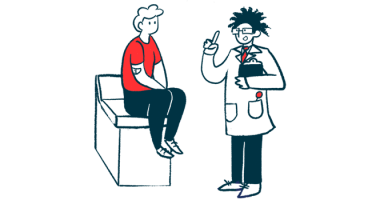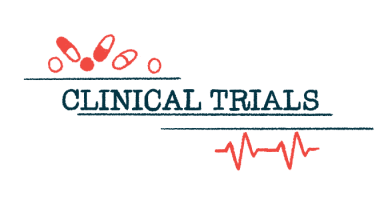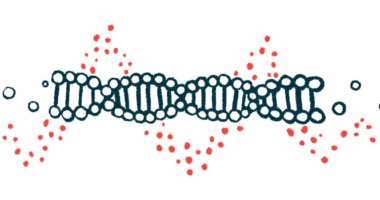Physiotherapy for FAP
Last updated April 11, 2024, by Marisa Wexler, MS

Physiotherapy, also called physical therapy, is a form of rehabilitation that may be used to improve mobility, strength, and functional abilities in people with familial amyloid polyneuropathy (FAP).
The genetic disorder, also known as hereditary transthyretin amyloidosis with polyneuropathy, is marked by progressive peripheral neuropathy, or damage to nerves outside the brain and spinal cord.
This gives rise to symptoms such as atypical sensations and muscle weakness that generally manifest in adulthood and can affect a person’s balance and walking pattern, or gait.
While there isn’t a cure for FAP, several medications are approved that can slow the disease’s progression, while supportive measures like physiotherapy can help patients keep their functional ability and maintain a good quality of life.
The benefits of physiotherapy for people with FAP
Physiotherapy broadly focuses on evaluating, diagnosing, and treating conditions that affect a person’s movement and function, to maintain or improve the body’s physical functions. In people with FAP, benefits from physiotherapy may include pain management, gait improvement, and maintaining range of motion.
The specific techniques and interventions used in physiotherapy can vary widely depending on the person’s condition, goals, and needs, and may evolve over time as their situation changes.
Physical therapists will work with patients to find suitable physiotherapy exercises for people with FAP. Some evidence suggests that land-based and aquatic physiotherapy exercises have comparable benefits in people with peripheral polyneuropathy in terms of gait and balance.
Generally speaking, physical therapy for polyneuropathy can include four kinds of exercise activities: muscle strength, balance training, stretching, and aerobic exercises. In some cases, physical therapists may recommend assistive devices such as braces or splints to support and protect injured nerves and help the patient move safely.
Physiotherapy for nerve damage and its associated symptoms may also include approaches other than exercise, such as electrical stimulation of nerves, acupuncture, and laser therapy.
Strength exercises
Nerve damage in FAP can affect muscle stimulation by nerve cells, leading to progressive muscle weakness. Strength exercises, such as lifting weights, using resistance bands, or holding poses such as planks or lunges, work to build and maintain the strength of the muscles.
Along with helping to maintain functional abilities, strength training can help make muscles and joints more resilient and reduce the risk of injury.
Balance exercises
The progressive muscle weakness that characterizes FAP also can impact a patient’s balance, increasing the risk of falls. Balance exercises seek to practice coordination and strengthen the many muscles needed to stay upright and stable, which is key for fall prevention.
Balance exercises generally involve having the patient try to maintain their balance in a particular pose or while doing an activity that fires up these muscles.
Stretching
As muscle weakness can make muscles feel tight, increasing flexibility is also an important part of maintaining physical function and range of motion. Physical therapists can work with patients to develop personalized stretching regimens, as well as nerve gliding exercises, which are designed to improve muscle and joint flexibility.
Nerve gliding, also called nerve flossing, is a therapy technique wherein specific movements are performed to stretch out or release injured and compressed nerves, which may help relieve some polyneuropathy symptoms.
Stretching is also an important part of warming up for more intensive strength or aerobic training. Stretching before strenuous exercise helps minimize the risk of exercise-related injury.
Aerobic exercises
Aerobic exercises, also known as cardiovascular exercises or cardio, are activities that increase muscular activity, heart rate, and breathing rate over a sustained period of time. Examples include walking, jogging, cycling, swimming, and aerobic classes such as Zumba or step aerobics.
These exercises improve cardiovascular health and endurance, and are vital for maintaining health overall. The World Health Organization recommends that adults engage in moderate-intensity aerobic exercises for at least 150 minutes a week (30 minutes a day, five days a week, for example) to maintain good health.
It’s not common to do aerobic exercises in physical therapy sessions, but therapists will often recommend patients perform those activities on their own time to help maintain optimal health. Physical therapists can be an excellent source of guidance for finding appropriate aerobic exercises for people with FAP.
Safety tips for physiotherapy exercises
Although physiotherapy and physical exercise, in general, are essential for maintaining health, improperly doing certain exercises can lead to injuries.
It’s recommended that patients perform their prescribed activities under the supervision of a qualified expert, who can offer precise instructions about how to correctly perform an exercise. The expert also can guide patients in exercise intensity, ensuring they are pushing themselves hard enough to derive benefits, but without risking strain or injury.
As a rule, patients shouldn’t attempt any type of specialized exercise unless they’ve received appropriate instructions first. Following a physiotherapist’s directions about appropriate behavior and attire is crucial, and it’s also crucial that patients openly communicate with their physical therapist to voice any uncertainty or discomfort.
Other physiotherapy interventions
Other physiotherapy interventions may sometimes be used to ease pain associated with peripheral neuropathy.
For example, several methods of electrical stimulation, wherein an electrical current is applied to target nerves, can improve nerve regeneration and functional recovery, and provide some pain relief for people with peripheral neuropathy.
One of those methods is called spinal cord stimulation, where electrodes are placed directly on the spinal cord and deliver electrical impulses that are intended to alter how the brain senses pain or to block pain signals. It has been shown to ease neuropathic pain when other standard treatments have failed, including in people with FAP.
There is some evidence that suggests transcutaneous electrical nerve stimulation (TENS), where electrical currents are delivered to nerves noninvasively by applying electrodes in the skin, may help alleviate pain with peripheral neuropathy. Future studies will need to confirm its potential benefit in FAP patients, however.
Acupuncture, a key component of traditional Chinese medicine, may also be used in people with peripheral neuropathy. It involves the strategic placement of thin sterile needles through a person’s skin and the application of heat or electrical stimulation. This is thought to stimulate the nervous system by releasing chemical signals to the muscles, spinal cord, and brain. Previous review studies have reported benefits in certain disease-related neuropathies, but findings from controlled clinical trials have been somewhat inconsistent.
Low-level laser therapy is a painless, noninvasive intervention that applies a low-level red or near infrared light to the surface of the skin. It’s thought to have anti-inflammatory effects and to increase levels of endorphins, chemicals the body produces naturally to cope with pain, which together may help to relieve neuropathic pain. Some studies have shown certain beneficial effects of low-level laser therapy for this type of pain.
While these types of physiotherapy interventions have shown modest effects in some people with neuropathic pain, it remains unclear whether they are similarly effective in pain caused by FAP.
FAP News Today is strictly a news and information website about the disease. It does not provide medical advice, diagnosis, or treatment. This content is not intended to be a substitute for professional medical advice, diagnosis, or treatment. Always seek the advice of your physician or other qualified health provider with any questions you may have regarding a medical condition. Never disregard professional medical advice or delay in seeking it because of something you have read on this website.
Recent Posts
- Phase 3 trial is tracking use of acoramidis to block ATTR onset
- I wish my country could benefit from gains in amyloidosis treatment
- Long-term Amvuttra treatment safe, pooled trial analysis shows
- Gene therapy nex-z lowers FAP protein levels for 3 years
- YOLT-201 therapy for FAP, other forms of ATTR gets funding boost
Related articles






